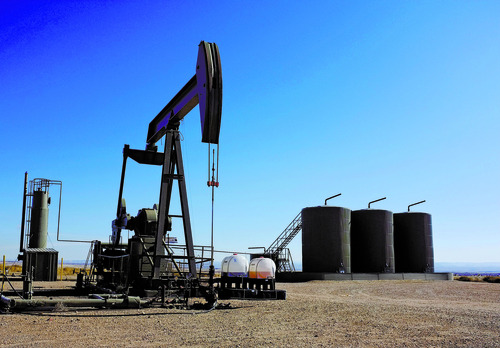This is an archived article that was published on sltrib.com in 2013, and information in the article may be outdated. It is provided only for personal research purposes and may not be reprinted.
Overproduction of U.S. natural gas, not burdensome drilling regulations, is driving energy developers from western public mineral leases to non-federal lands rich in oil to the east.
A new think-tank report found that liquid hydrocarbons, particularly shale oil, are where the drilling action is because of low natural gas prices. And this oil is found under private and state property, not the expanses of federal land in the Intermountain West.
Aggressive production since 2003 has pushed down natural gas prices to historic lows, while surging global demand has made oil a more attractive target for energy development, according to report author Greg Zimmerman, policy director for Denver-based Center for Western Priorities.
"Oil and gas companies are in business to make money, and profits in recent years show they're good at it," he said. According to the new report, 89 percent of shale oil and mixed oil and gas in the Intermountain West occupy non-federal deposits even though the feds control much of the region's lands.
The report rebuts the story line that federal regulations and reluctance to lease are pushing drill rigs off public land, but one industry advocate called the analysis "superficial."
"Looking at one type of play doesn't excuse the government for holding up development. This report doesn't look at other non-conventional oil plays in Utah and Wyoming," said Kathleen Sgamma, vice president for public affairs for the Western Energy Alliance.
Shale oil should not be confused with oil shale which lies under Utah in vast deposits, but in a non-liquid form that is difficult and costly to extract. Shale oil, by contrast, is found in reservoirs, such as those under North Dakota's rich Bakken shale formation, that have been cracked open with new drilling technologies.
Sgamma said the Bakken's federal holdings are being developed at a much slower pace than elsewhere in that booming oil patch. The surge in U.S. oil and gas production since 2007 can be attributed entirely to non-federal mineral deposits, now accounting for 74 percent of the nation's oil output and 85 percent for gas, according to a report released last week by the Congressional Research Service. But some observers believe there is no getting around the roles of economics and geology in these trends.
"The decline [in federal production] is best explained as the result of market choices made by individual companies to shift their production to oil and other liquid plays and away from gas. And this means less activity on public lands," said law professor Mark Squillace, the former director of the University of Colorado's Natural Resources Law Center.
Last week, natural gas was fetching $3.49 per thousand cubic feet, less than half the price six years ago, while oil prices have traveled in the opposite direction over the same time frame, sometimes peaking above $100 a barrel.
Gas's price collapse illustrates the need for the feds to be more deliberate in authorizing development, Squillace said .
"The government has a responsibility to manage its leasing policies and decisions based on where the market is going and where it has been. It makes sense to proceed with caution to make sure they are not contributing to oversupply," he said.
Zimmerman noted that industry is sitting on 7,000 approved federal drilling permits as proof that regulatory roadblocks are more a mirage than a real impediment to Western energy development.
But that number doesn't hold much meaning, said Sgamma, who contends the more important question is the length of time it takes to secure a drilling permit. More than one-third of those unused permits are for coal-bed methane wells that lost their economic justification during the three years it took for the feds to release them, she said.



